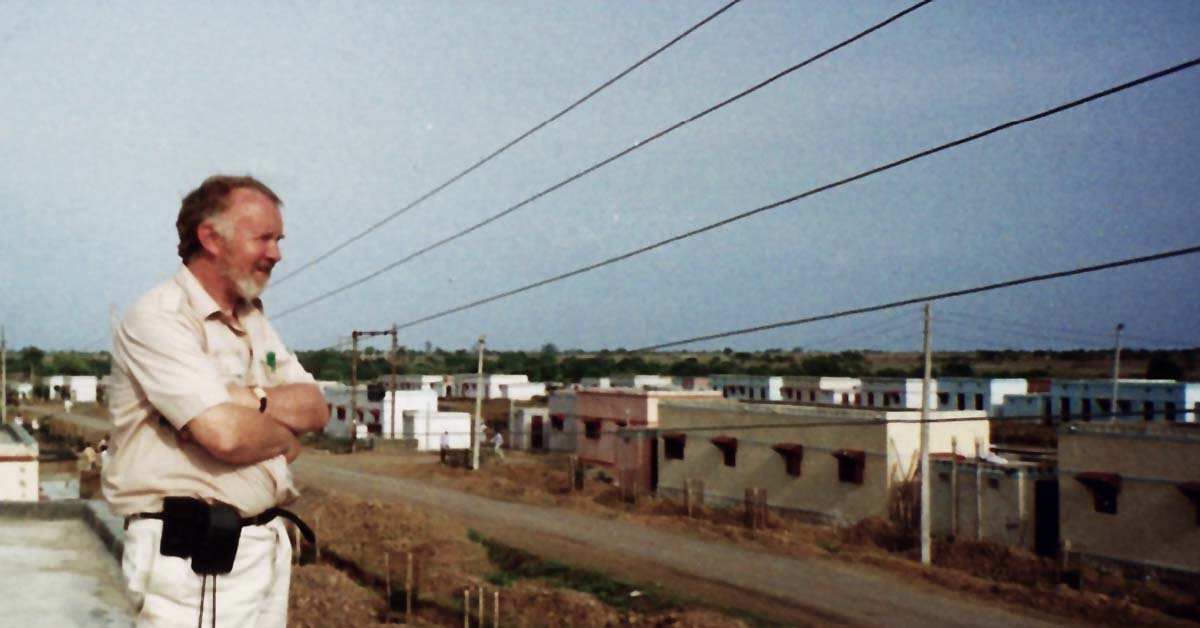 This year marks the 10th anniversary of our Master of International Cooperation Sustainable Emergency Architecture. To celebrate this occasion, the academic year will end with an event featuring talks from special guests that include alumni, professors and invited speakers. On of our guest speakers will be Ian Davis, Visiting Professor in Kyoto, Lund and Oxford Brookes Universities and Honorary Visiting Professor at RMIT University. A trained architect, he has worked in Disaster Risk and Recovery Management as an academic teacher, researcher, NGO director and international consultant since 1972. Furthermore, he has authored, co-authored or edited 16 books including the first study of Shelter after Disaster in 1978.
This year marks the 10th anniversary of our Master of International Cooperation Sustainable Emergency Architecture. To celebrate this occasion, the academic year will end with an event featuring talks from special guests that include alumni, professors and invited speakers. On of our guest speakers will be Ian Davis, Visiting Professor in Kyoto, Lund and Oxford Brookes Universities and Honorary Visiting Professor at RMIT University. A trained architect, he has worked in Disaster Risk and Recovery Management as an academic teacher, researcher, NGO director and international consultant since 1972. Furthermore, he has authored, co-authored or edited 16 books including the first study of Shelter after Disaster in 1978.
At last year’s Design, Disaster and Development Research Forum, co-organised by UIC Barcelona School of Architecture, RMIT University and Oxford Brookes University, Ian gave the keynote presentation ‘Ten things I have learnt from teaching in the disaster and design field’.
We would like to introduce a few of the key lessons that grew out of his expansive teaching and training experiences and are specifically relevant to our master course:
- To be effective, teaching needs to be enriched by research, writing and advocacy. Allow personal experience to become the bedrock of your teaching experience.
- Promote active rather than passive learning. An emphasis should be placed on learning outcomes, not on teaching aims. Genuine learning can be enabled and facilitated through active learning strategies such as field courses, case studies involving teamwork and data collection and analysis, simulation exercises and links to live projects.
- Consider useful knowledge, skills and attitudes when designing a course. These key aspects should be decided in close consultation with practitioners who may employ the students.
- A ‘downward accountability’ to participants, students and beneficiaries, who often lack power, is essential. When colleagues and students are encouraged to mirror the approach of ‘downward accountability’ and also apply this in field relationships with communities, it will affect teaching styles, evaluations, power, inputs and outcomes.
- Devise a university course with transferable skills. Learning outcomes that give emphasis to transferable skills, attitudes and knowledge ensure that every student gains something substantial for their future career, even within a different field.
- Education has a powerful long-term impact. The students’ present education or training will significantly influence the quality of future decisions they will take as professionals. Thus, unlike any other sector, education is a strategic investment in people and in the future. Rebuilding education and communication are neglected key components in disaster recovery.
“I want to emphasise the joy and deep satisfaction to be gained in being educated and in facilitating the learning of others. This has been particularly important given the fact that in these disaster and development fields lives actually depend on the presence of well trained and well educated public and private officials. Education has been the most productive experience of my professional life, where positive lessons far outweigh any negative reactions.” Ian Davis

Drawing by Ian Davis used to collect information from local residents after the Latur earthquake 1993

Successful recovery of Malcondji village following the 1993 Latur earthquake in Maharashtra State, India
The full report of the Design, Disaster and Development Research Forum can be found here.
All images courtesy of Ian Davis

